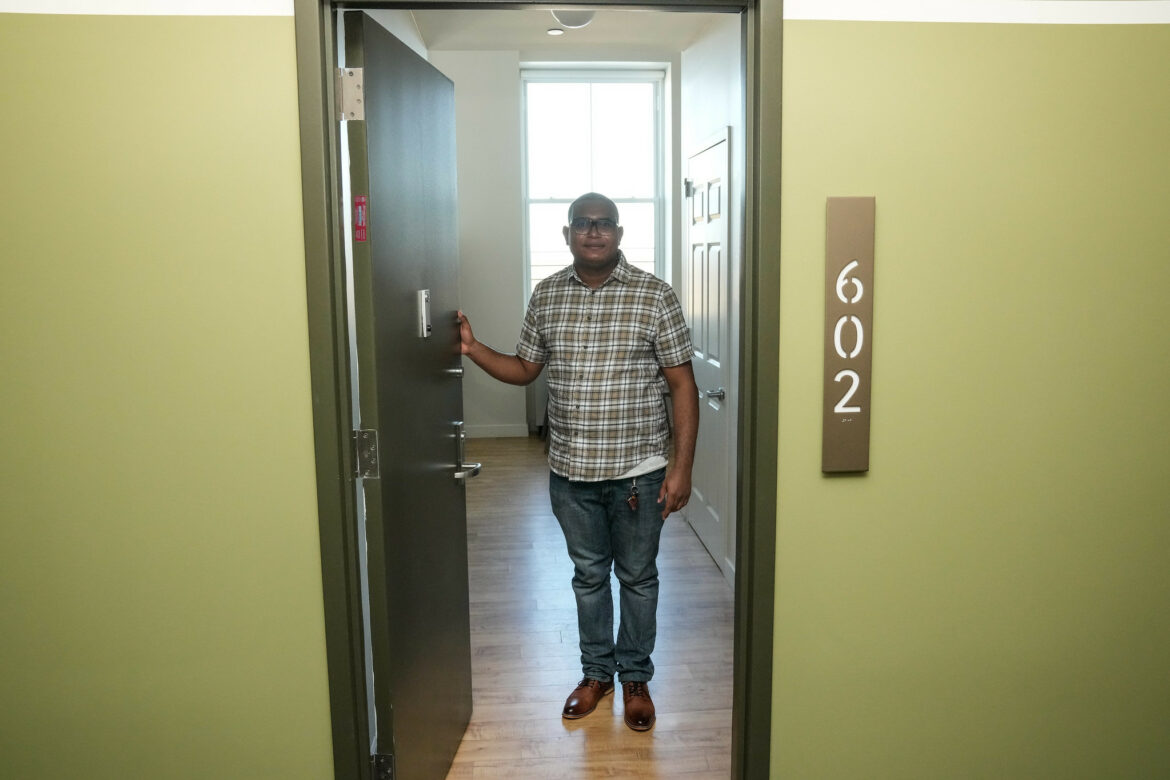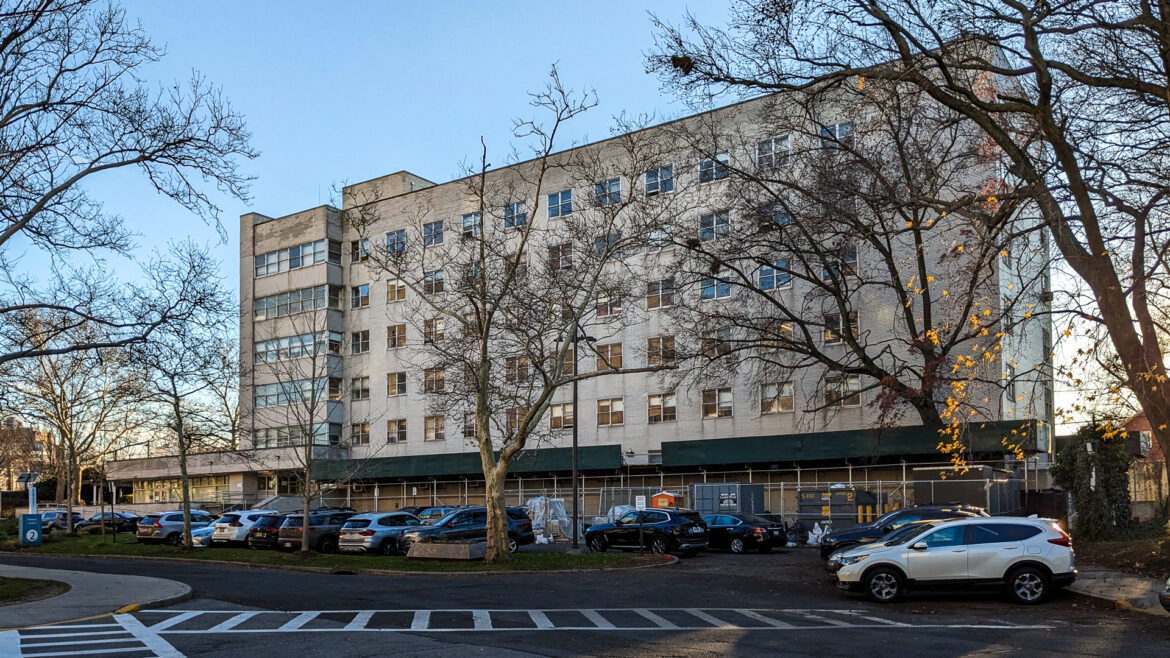NYC Health + Hospitals says it’s found permanent homes for more than 1,200 of its patients and their families, both through supportive housing placements and in affordable apartments on its own land. The marker comes as the mayor directs all city agencies to examine their property holdings for places to build new housing.

Michael Appleton/Mayoral Photography Office
A tenant in the T Building, which opened in 2022 on the site of a former tuberculosis hospital at the city’s Queens Hospital Center campus in Jamaica.On Wednesday, Mayor Eric Adams signed an executive order directing every city agency to search its property holdings for unused or underutilized public land that could be tapped for residential development—an effort to address the city’s housing shortage, after rental vacancies hit a decades-long low last year.
“If there’s any land within the city’s control that has even the remotest potential to develop affordable housing, our administration will take action,” the mayor said in a statement accompanying the directive.
But at least one city entity is already fulfilling the role of indirect housing provider: the public hospital system, NYC Health + Hospitals, which announced earlier this month that it had placed more than 1,200 of its patients and their families in permanent homes.
Its Housing for Health program was launched in 2022 as a way to connect homeless New Yorkers receiving care in the city’s hospitals with access to stable housing.
It does so through several approaches: helping patients find and apply for affordable and supportive apartments; through “medical respite,” in which unhoused patients can convalesce for up to three months in short-term units after a hospital stay; and by working with the city’s housing agencies to develop homes on excess parcels of land on Health + Hospitals’ campuses.
“We have a strategic focus on housing our patients,” Leora Jontef, Health + Hospitals’ assistant vice president of housing and real estate, told City Limits, pointing to research that demonstrates the link between health outcomes and having a stable home.
About 6 percent of the hospital system’s patients, roughly 50,000 people each year, are experiencing homelessness, according to Health + Hospitals, and unhoused adults have three times more hospital and emergency room visits than the general population.
Health crises are often among the root causes of homelessness, and unstable housing puts additional stress on patients that can exacerbate ailments and make it harder to heal.
“Without a roof over your head, How do you address those things? You can’t. You don’t have a bedside table to put your medicine,” Jontef said. “After you’re housed, you can start addressing those other physical and mental issues to live a happier and healthier existence.”
While housing has been built previously on land controlled by the public hospital system, connecting patients to those units is something Health + Hospitals only began focusing on in the last few years, according to Jontef.
This includes the T Building, which opened in 2022 on the site of a former tuberculosis hospital on the campus of NYC Health + Hospitals/Queens in Jamaica. The building boasts 200 income-restricted apartments, 75 of which were set aside for formerly homeless patients who can access on-site case management for support services like health care and financial literacy help.

NYC Health + Hospitals
The T building, which houses 200 apartments in a former tuberculosis hospital at the Queens Hospital Center campus.There are another 650 affordable apartments in the pipeline on other Health + Hospitals sites. The city broke ground last year on a 93-unit building on the NYC Health + Hospitals/Woodhull campus in Brooklyn, where 56 supportive apartments will go to patients experiencing homelessness.
Affordable housing is planned for what’s now a parking lot of a health clinic in Morrisania in the Bronx, as well as at 1727 Amsterdam Ave., a Health + Hospitals owned building in Upper Manhattan that’s fallen into disrepair.
Another proposal, called Just Home, would create 58 supportive apartments in a currently-vacant building on the Jacobi Hospital campus for seriously ill people leaving jail, plus another 24 units for low-income renters. The plan has drawn furious opposition from some nearby residents, including local Councilmember Kristy Marmarato. The project is awaiting a vote from the City Council.

Adi Talwar
The proposed site for the “Just Home” project at 1900 Seminole Ave. on the Jacobi Medical Center campus.Beyond the city’s public hospitals, housing experts see a role that health care facilities could play in new development more widely: an NYU Furman Center analysis last year estimated that 25 million square feet of zoned Floor Area Ratio in health- and hospital-owned properties, including public and privately run facilities, was not being used. That space could equate to 25,000 to 30,000 residential units if developed, the researchers said.
“We’re in the process of thinking about what’s next, how can we collaborate with [the Department of Housing, Preservation and Development]?” Jontef said. “We’re really proud of using hospital land for this purpose.”
To reach the reporter behind this story, contact Jeanmarie@citylimits.org.
Want to republish this story? Find City Limits’ reprint policy here.







